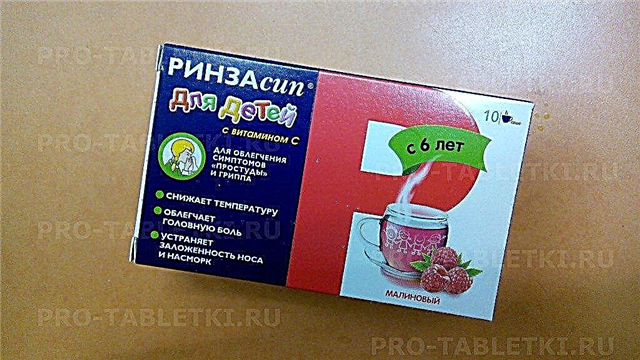
Women who are responsible for their health cannot but pay attention to such an indicator as vaginal discharge. They are different on different days of the menstrual cycle. White discharge after ovulation often raises questions. We will tell you about what they can mean in this article.

Why is sexual secretion an important diagnostic feature?
The female reproductive system is very vulnerable and needs constant protection. The role of the main protector is taken on by the discharge, which consists of vaginal and cervical secretions. They are constantly being developed protecting the reproductive tract from the penetration of pathogenic bacteria, fungi and viral particles. Of course, a large number of causative agents of the disease will not be able to stop and render harmless, but a small number of them can be defeated.
The cervix, which contains the mucus-producing cervical canal, and the vaginal mucous membranes are very sensitive to changes in hormonal levels. The entire female cycle is regulated precisely by the ratio of the concentration of active hormones. For example, in the first half of the cycle, when the next menstruation is completed, the maturation of follicles on the surface of the ovaries begins, and this process is controlled by the hormone FSH. With him, the discharge is not abundant, even scanty, they have no other purpose in this phase of the cycle, except to protect the uterus from bacteria and viruses.
When ovulation approaches, when the dominant follicle reaches a large size, the level of estrogen rises and the level of the hormone LH (luteinizing hormone) rises literally in a day. Its task is to thin the follicle membrane and cause it to rupture, so that a mature egg can leave the bubble in which it developed and enter the fallopian tube for subsequent fertilization. Having caught an increase in the concentration of estrogen and LH in the blood, the cervical canal begins to secrete fluid 3 times more diligently. Allocations become viscous, stringy, abundant, transparent, outwardly resembling raw chicken egg white.

During this period, the secretions perform a dual function - protective and reproductive. Due to their alkaline environment, they partially reduce the acidity of the vaginal environment, making it more tolerant to sperm, and also facilitate their penetration through the cervical canal into the uterine cavity and further into the fallopian tubes, where a female reproductive cell awaits them.
Ovulation does not last long, because the egg cell lives no more than one and a half days. If conception does not occur, it dies, if it does, then a zygote is formed, from which, with its constant fragmentation, a morula is formed, and then a blastocyst - the very first evolutionary forms of the unborn child.
Allocation changes after ovulation. The bursting follicle turns into a corpus luteum - a temporary gland necessary for the production of progesterone. It is this hormone that provides support for the second half of the female cycle.

Causes of white secretion
If yesterday the discharge was abundant and transparent, but today it has become thick and white, you should not sound the alarm. Nothing pathological happens. After ovulation, intensive work of the cervical canal is no longer necessary. He continues to produce mucus, but not for reproductive purposes, but, as in the first phase of the cycle, to protect the reproductive organs from unauthorized invasion of harmful organisms. The decrease in discharge is associated with this.
The color changes under the influence of progesterone. Already in the first day after ovulation, it is normal, with a normal hormonal background in a woman, the discharge turns white. If this happened, you can determine with great accuracy yourself when ovulation occurred. If they turned white today, it means that yesterday and the day before yesterday was the most favorable time for conceiving a baby.
Progesterone is a caring hormone. He does everything for the female body to tune in to bearing the fetus, and it makes no difference whether the pregnancy actually came or not. Progesterone is produced by the corpus luteum anyway.
If there was no ovulation, then there is no corpus luteum (one is impossible without the other), and then the discharge can be any, but not white.

Normal white secretion in the postovulatory period is not plentiful, odorless and itching discharge does not cause any inconvenience.
Some women (usually with high progesterone levels) may have a slightly yellowish discharge. This is also completely normal. Such discharge remains throughout the second half of the cycle. If a woman does not become pregnant, then 2-3 days before the expected menstruation, the corpus luteum dies, progesterone decreases, and the level of estrogen rises again, the discharge becomes more abundant, and may slightly liquefy. The period comes on time.
If in the current cycle a woman conceived a baby, then a week after ovulation, the embryo should be implanted into the endometrial layer of the uterus. The ovum will gain a foothold and the chorionic villi will begin to produce another important hormone - hCG. Its main role is to support the production of progesterone. The corpus luteum continues to live, at least until the formation of the placenta.
Progesterone remains elevated. 2-3 days before the expected date of menstruation, the discharge remains white, thick, the type of secretion does not change. From the first day of the delay, you can do a test and make household members happy with the news of an imminent replenishment in the family.

Pathological situations
Not any white discharge with a clear conscience can be classified as normal and harmless. Pay attention to how you feel first. If the lower abdomen pulls, the lower back hurts, and the white secretion has a heterogeneous structure - with impurities, clots, you should visit a doctor, since such discharge can be a sign of gynecological pathology.
Creamy (creamy) discharge too abundant for the second phase of the female cycle, may indicate that the inflammatory process has begun at its very initial stage. In this case, cervical mucus continues to be intensively produced and immediately loses its transparency under the action of progesterone.
Curdled discharge with a characteristic yeast odor talk about the manifestation of thrush. This can happen due to a decrease in immunity due to a disease that is not related to reproduction, for example, against the background of a cold. Also, thrush can be the earliest sign of pregnancy, because already in the first weeks, immunity is significantly reduced so that the fetus is not rejected by the mother's body. Thrush must be treated.
Thin, watery discharge with white "flakes" or milk-like may be a sign of a genital infection or a symptom of bacterial vaginosis.
A woman should visit a doctor without waiting for the next menstruation, if after ovulation she has a fever for more than a day, discharge (of any color and shade) is accompanied by pain in the abdomen, lower back, back, urinary disorders, itching. In the absence of such symptoms, white discharge should be considered the norm.




